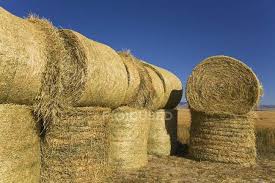Derrell S. Peel, OSU Extension Livestock Marketing Specialist
Cow-calf producers are constantly managing many production and marketing challenges. However, as we consider the coming year, one that deserves special attention is to produce and market forage for maximum value. Cattle producers are frequently reminded that they are really in the forage business and that cattle are a means to harvest and market forage. There are numerous considerations to market forage for the highest value.
In part, marketing forage involves considering cattle production and marketing alternatives that represent higher value for forage. For cow-calf producers, this includes considerations for marketing calves at weaning or retaining calves for backgrounding/stocker production as well as marketing cull breeding animals. The market environment in 2022 may provide more possibilities with reduced cattle numbers favoring weaned calf production and marketing yet, at the same time, higher grain prices and elevated feedlot cost of gain increase the value of added forage-based weight gain on feeder cattle. Producers will have more options and potential to add value and planning now can improve returns to cattle and forage production later.
Feed costs are the largest cost component for cow-calf production. Part of managing forage for increased value is to utilize grazing better to reduce cow feed costs. Grazing is the least expensive feed for cows, so this means managing pastures for maximum quantity, quality and duration of grazing and having cows do most of their own feed harvesting. Early planning is necessary to plan annual forage production and grazing management. This must be done in conjunction with plans for cow-calf production, retained stockers and forage use as part of cull cow marketing.
Feeding harvested forages (hay) is at least twice the cost of grazing. The goal should be to minimize hay use with grazing management. To the extent that hay use cannot be avoided, manage hay for reduced waste and to decrease hay expense. Test hay to know the nutritive value and how the hay will contribute to meeting cattle nutritional requirements. This is done on a pound basis so it is important to know the weight of round bales. Evaluate the economics of hay versus supplemental feeds to provide needed protein and energy relative to the cattle stage of production at different times and any available grazable forage.
Store hay to maintain quality and reduce waste. As I’m driving, I see lots of rounds bales from last year or the year before which are now melted into the ground with little or no feed value. Plan hay storage relative to how long the hay might need to be stored. The longer hay must/will be stored, the more you can justify investment in storage facilities (sheds, coverings, pads and drainage). Feed hay to reduce waste and know exactly how much cows are consuming. Think about how much hay cows need and how much they are getting. Round bales are more convenient and save labor but do require feeding management otherwise they can add significantly to annual cow costs.
With generally rising input costs, cow-calf producers need to put additional effort into cost management. Managing feed costs will be a key to minimizing cow costs and capitalizing on better cattle market conditions in 2022. It’s not too early to plan the next year of forage management and grazing.














